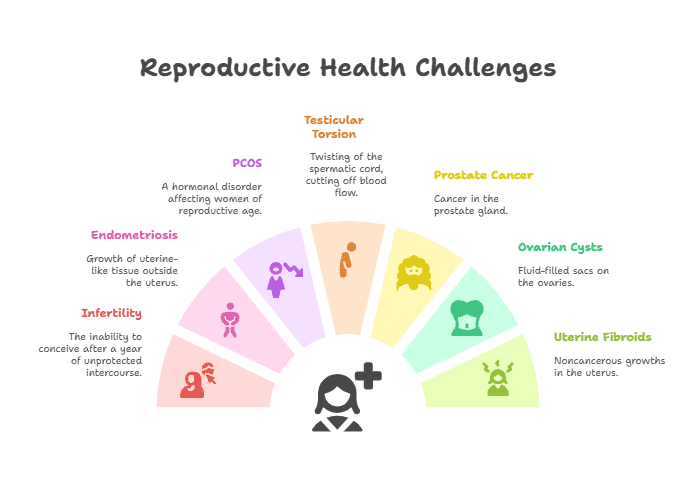The reproductive system is a complex network of organs and hormones that work together to allow for reproduction. However, like any other system in the body, the reproductive system is susceptible to disorders and pathologies that can impact an individual’s health and fertility. Understanding these disorders and pathologies is crucial for healthcare professionals in order to provide proper diagnosis and treatment for patients.
Common Reproductive Disorders
There are several common reproductive disorders that affect both men and women. Some of these disorders include:
- Polycystic Ovary Syndrome (PCOS): a hormonal disorder that affects women of reproductive age, leading to irregular periods and infertility.
- Endometriosis: a condition where the tissue that normally lines the uterus grows outside of it, causing pain and fertility problems.
- Prostatitis: inflammation of the prostate gland in men, which can cause pain and urinary symptoms.
- Infertility: the inability to conceive a child after a year of regular, unprotected intercourse, which can be caused by a variety of factors in both men and women.
Pathologies of the Reproductive System
Pathologies of the reproductive system can range from benign growths to malignant tumors. Some common pathologies include:
- Fibroids: non-cancerous growths that develop in the uterus and can cause heavy periods, pain, and infertility.
- Ovarian cysts: fluid-filled sacs on the ovaries that can cause pain and fertility issues.
- Testicular cancer: cancer that develops in the testicles, usually affecting younger men.
- Cervical cancer: cancer that develops in the cervix, often caused by the human papillomavirus (HPV).
Impact on Health and Fertility
Reproductive disorders and pathologies can have a significant impact on an individual’s health and fertility. They can cause pain, irregular periods, hormonal imbalances, and infertility, leading to emotional distress and a decreased quality of life. It is important for healthcare providers to properly diagnose and treat these conditions in order to improve the health and well-being of their patients.
Summary
Reproductive disorders and pathologies are common conditions that affect the reproductive system of both men and women. Understanding these disorders is essential for healthcare professionals to provide proper diagnosis and treatment for patients. Some common disorders include PCOS, endometriosis, prostatitis, and infertility. Pathologies of the reproductive system can range from benign growths like fibroids and ovarian cysts to malignant tumors like testicular and cervical cancer. These conditions can have a significant impact on an individual’s health and fertility, highlighting the importance of early detection and treatment.
Key Takeaways:
- Reproductive disorders can affect both males and females
- Common reproductive disorders in females include endometriosis, polycystic ovary syndrome (PCOS), and uterine fibroids
- Common reproductive disorders in males include erectile dysfunction, infertility, and prostate issues
- Pathologies of the reproductive system can include tumors, infections, and structural abnormalities
- Early detection and treatment of reproductive disorders is crucial for managing symptoms and preventing complications
Key Terms:
- Infertility: The inability to conceive a child after one year of unprotected intercourse.
- Endometriosis: A condition where tissue similar to the lining of the uterus grows outside of the uterus.
- Polycystic Ovary Syndrome (PCOS): A hormonal disorder common among women of reproductive age.
- Testicular Torsion: A condition where the spermatic cord becomes twisted, cutting off blood flow to the testicle.
- Prostate Cancer: Cancer that occurs in the prostate, a small walnut-shaped gland in men.
- Ovarian Cysts: Fluid-filled sacs that develop on the ovary.
- Uterine Fibroids: Noncancerous growths of the uterus that often appear during childbearing years.
